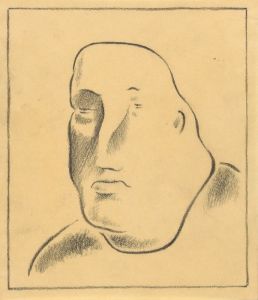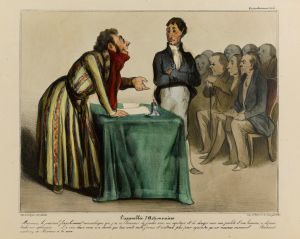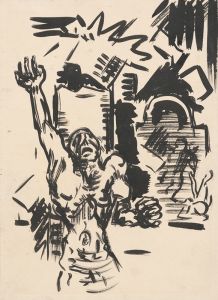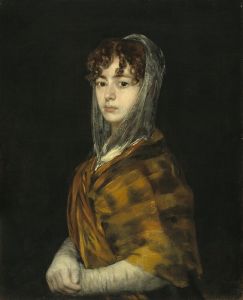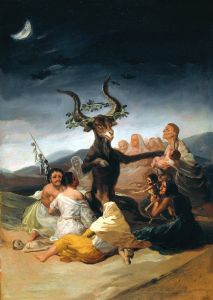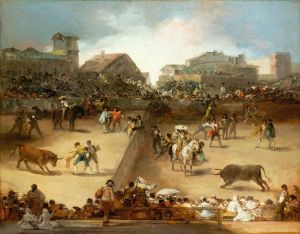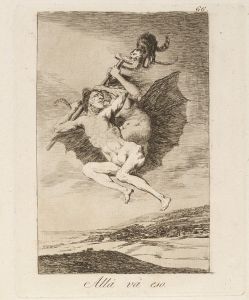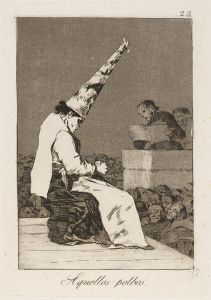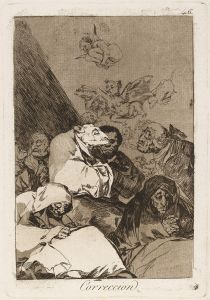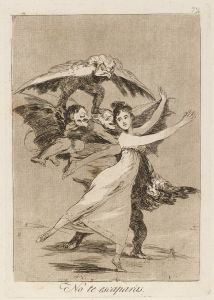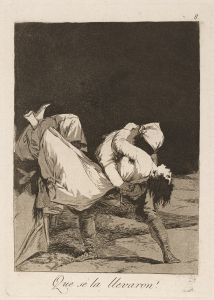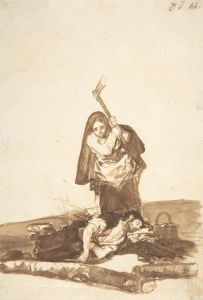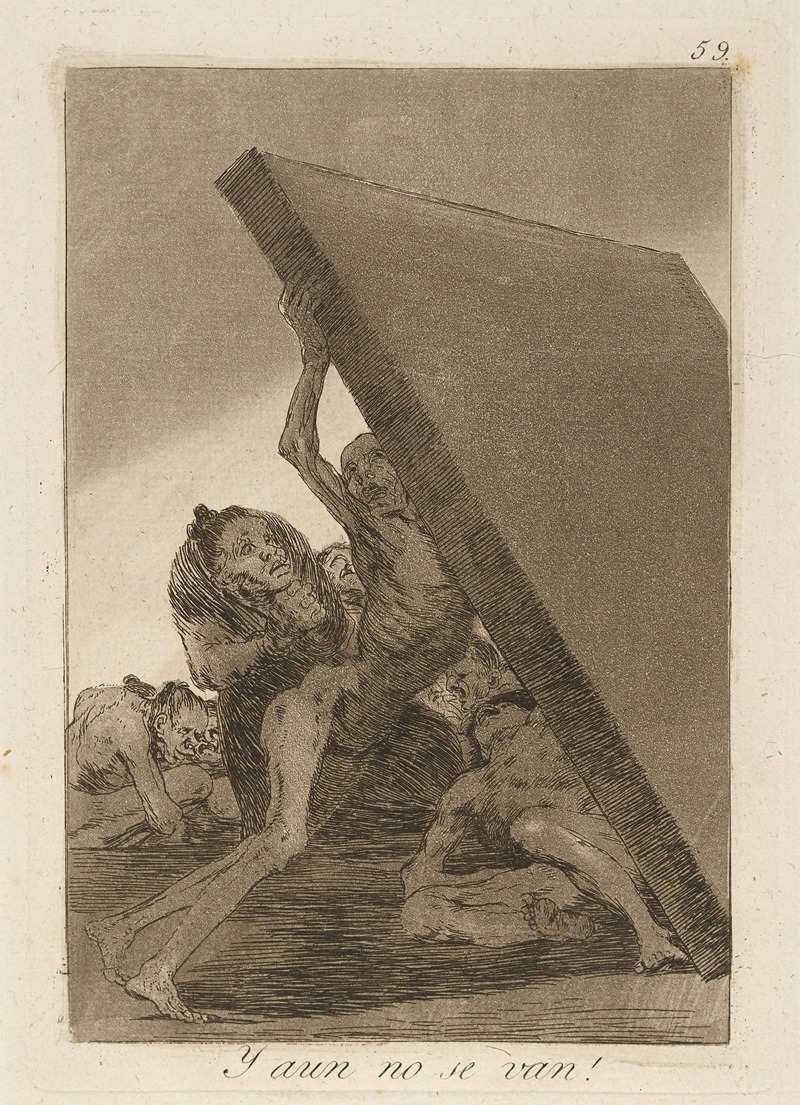
Y aun no se van!
A hand-painted replica of Francisco de Goya’s masterpiece Y aun no se van!, meticulously crafted by professional artists to capture the true essence of the original. Each piece is created with museum-quality canvas and rare mineral pigments, carefully painted by experienced artists with delicate brushstrokes and rich, layered colors to perfectly recreate the texture of the original artwork. Unlike machine-printed reproductions, this hand-painted version brings the painting to life, infused with the artist’s emotions and skill in every stroke. Whether for personal collection or home decoration, it instantly elevates the artistic atmosphere of any space.
Francisco de Goya, a prominent Spanish painter and printmaker, created a series of works known as "Los Caprichos," which are a collection of 80 prints published in 1799. These works are renowned for their satirical and critical exploration of Spanish society, politics, and human nature. Among these prints is "Y aun no se van!" which translates to "And Still They Do Not Go!" in English. This particular piece is part of Goya's broader commentary on the follies and absurdities of his time.
"Y aun no se van!" is an etching and aquatint, a technique that Goya mastered to achieve a wide range of tonal effects. The print depicts a scene filled with grotesque and fantastical figures, a common theme in Goya's work, which often delves into the surreal and the nightmarish. The imagery in "Y aun no se van!" is typical of Goya's style during this period, characterized by its dark humor and critical edge.
The figures in the print are often interpreted as symbolic representations of societal vices or human weaknesses. Goya's work frequently critiques the corruption and incompetence of the ruling classes, the superstitions perpetuated by the Church, and the ignorance of the general populace. "Y aun no se van!" fits within this framework, although the specific interpretation of the figures and their actions is open to analysis. The title itself suggests a sense of frustration or disbelief, possibly directed at the persistence of certain societal issues despite efforts to address them.
Goya's "Los Caprichos" series, including "Y aun no se van!", was initially published with the intention of selling to the public, but due to its controversial nature, it was quickly withdrawn from sale. The prints were seen as a bold critique of contemporary Spanish society, and Goya faced potential backlash from the institutions he critiqued. Despite this, the series has endured as a significant body of work in art history, illustrating Goya's innovative approach to printmaking and his fearless social commentary.
"Y aun no se van!" and the rest of the "Los Caprichos" series are housed in various collections around the world, including the Prado Museum in Madrid, which holds a significant number of Goya's works. These prints continue to be studied for their artistic technique and their insight into the cultural and political climate of late 18th-century Spain.
Goya's influence extends beyond his technical skill; his ability to capture the complexities of human nature and societal issues in his work has cemented his place as a pivotal figure in the transition from the Old Masters to modern art. "Y aun no se van!" remains a testament to his enduring legacy and his unflinching examination of the world around him.





